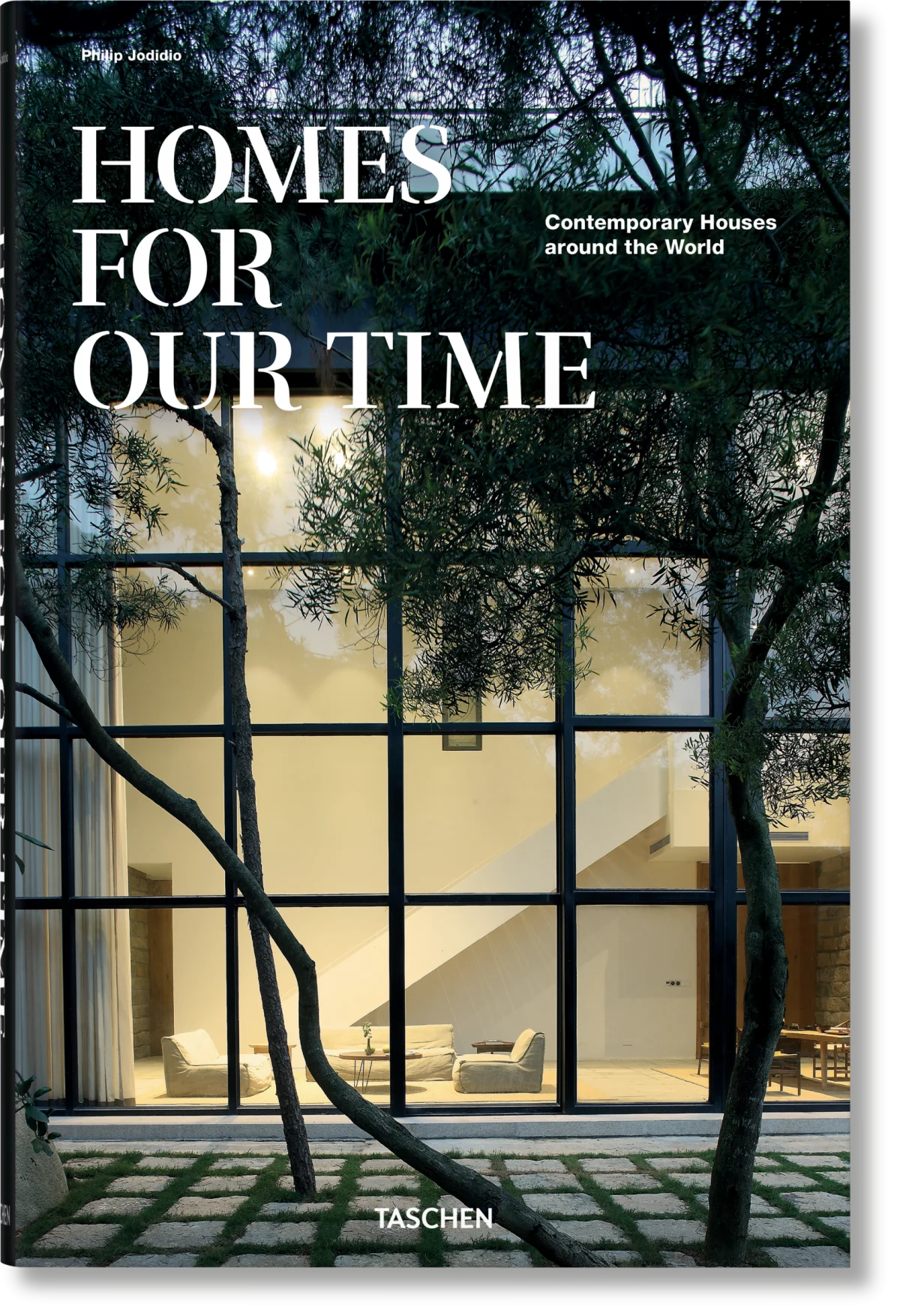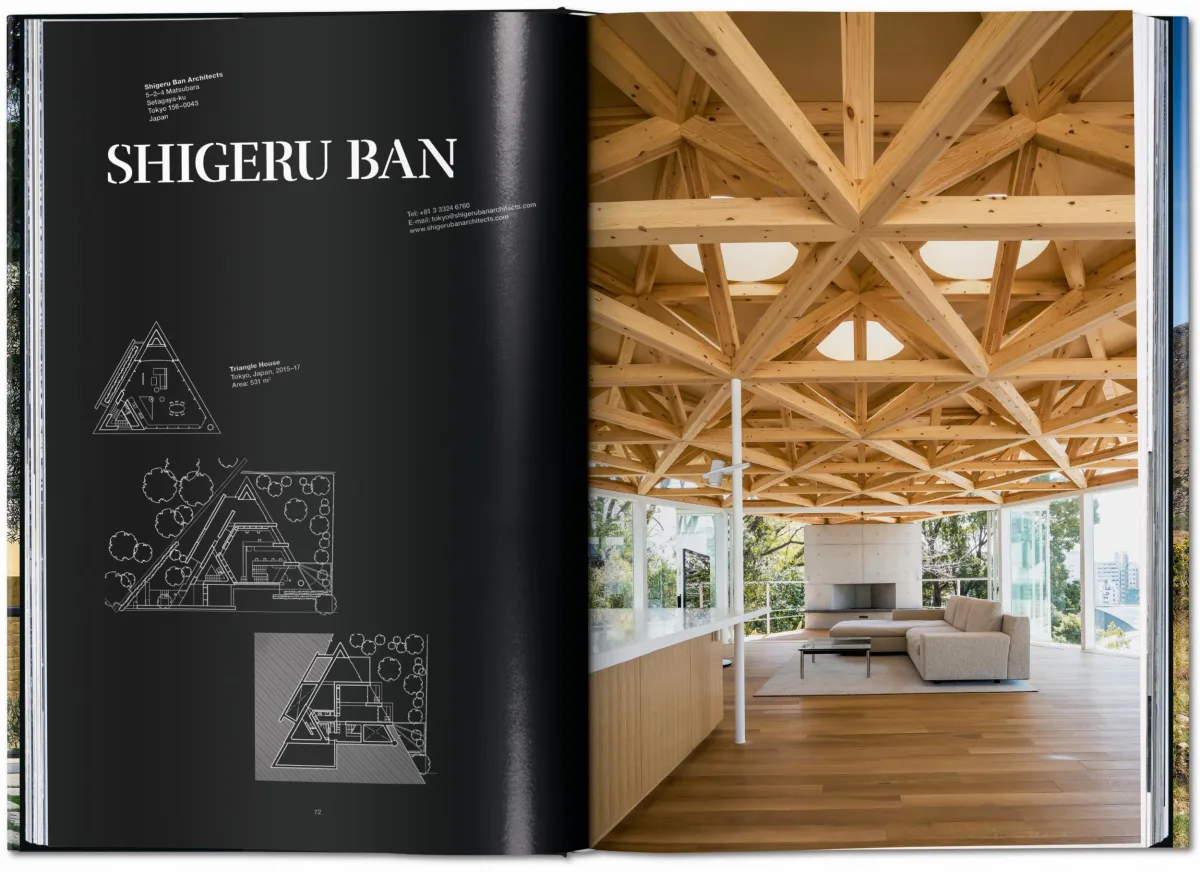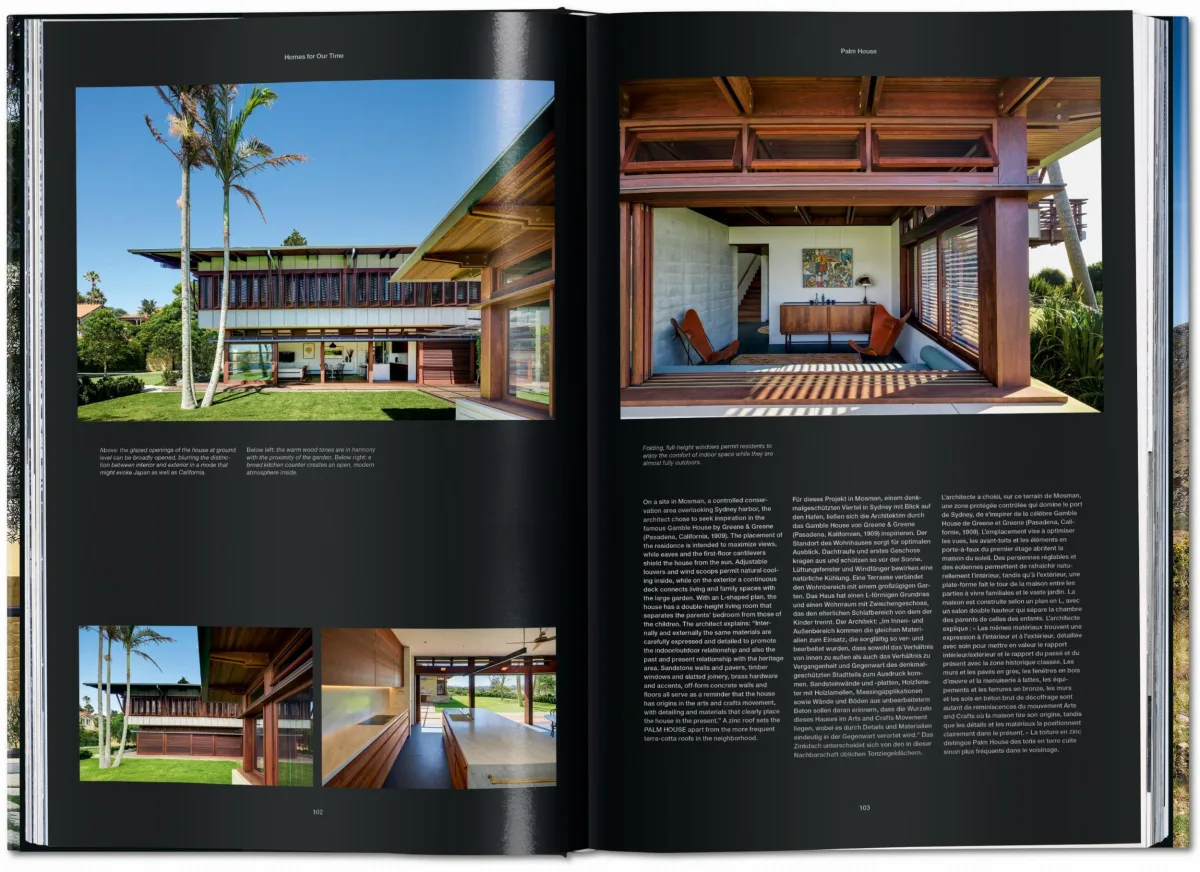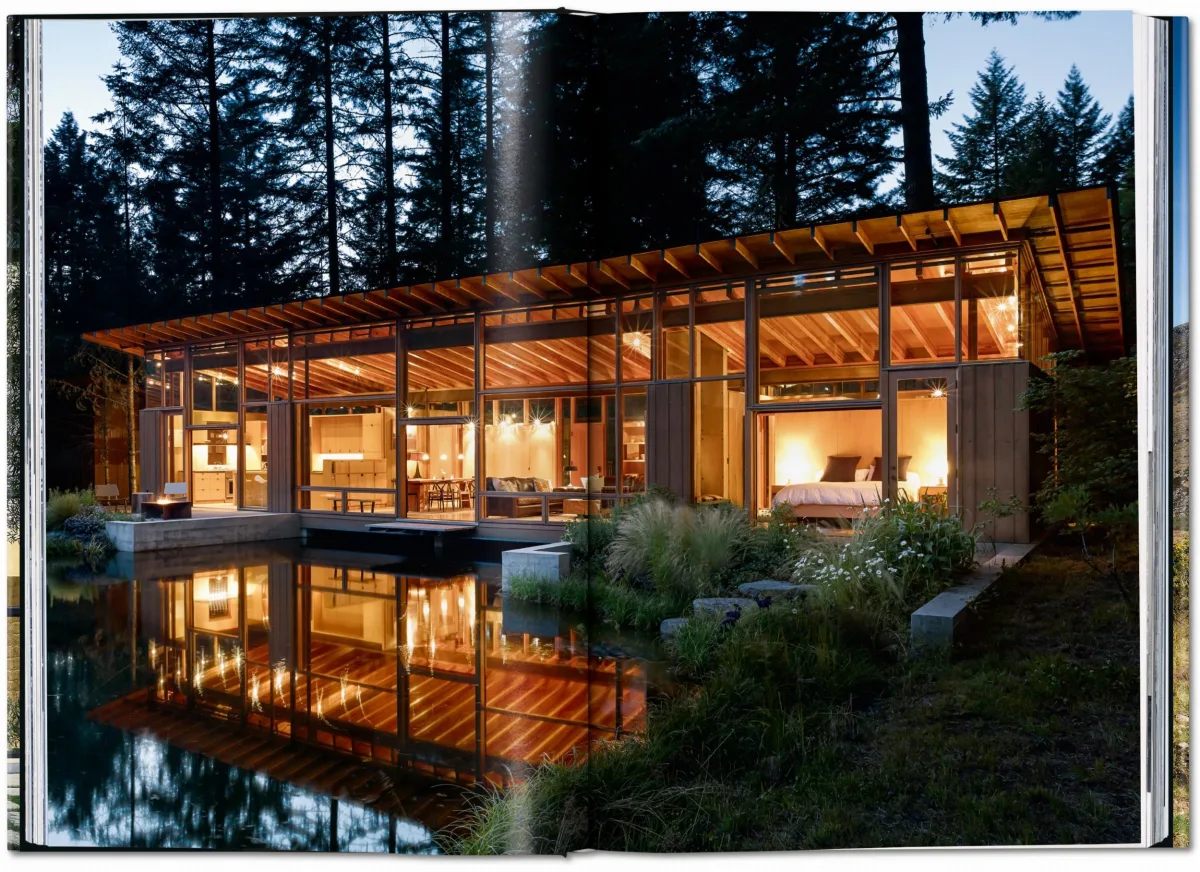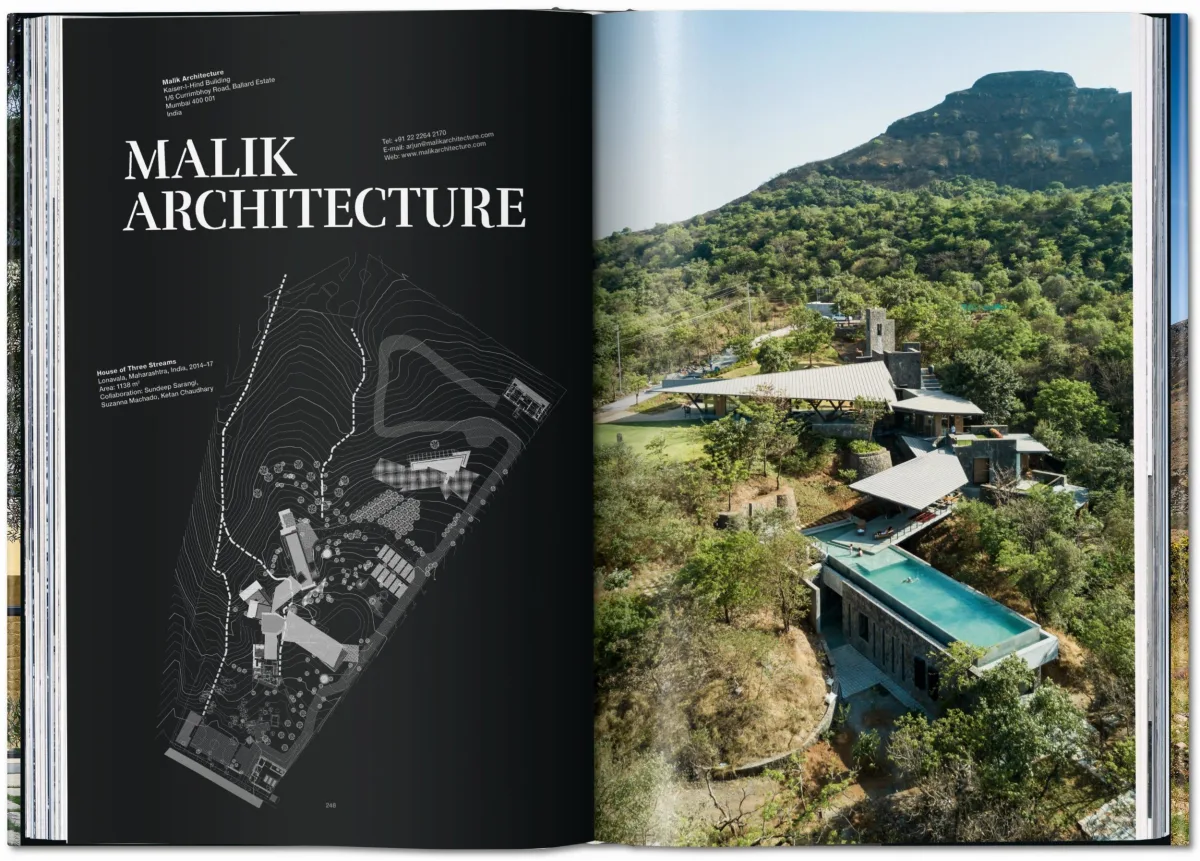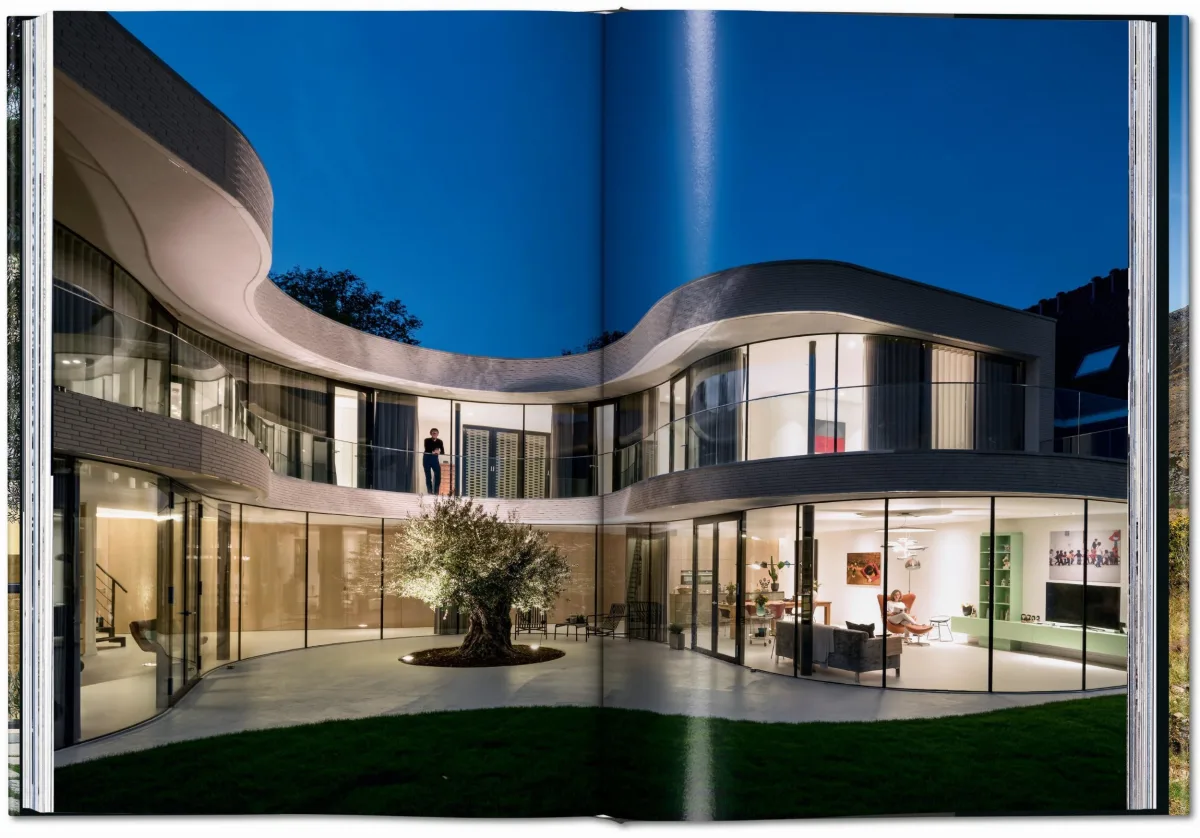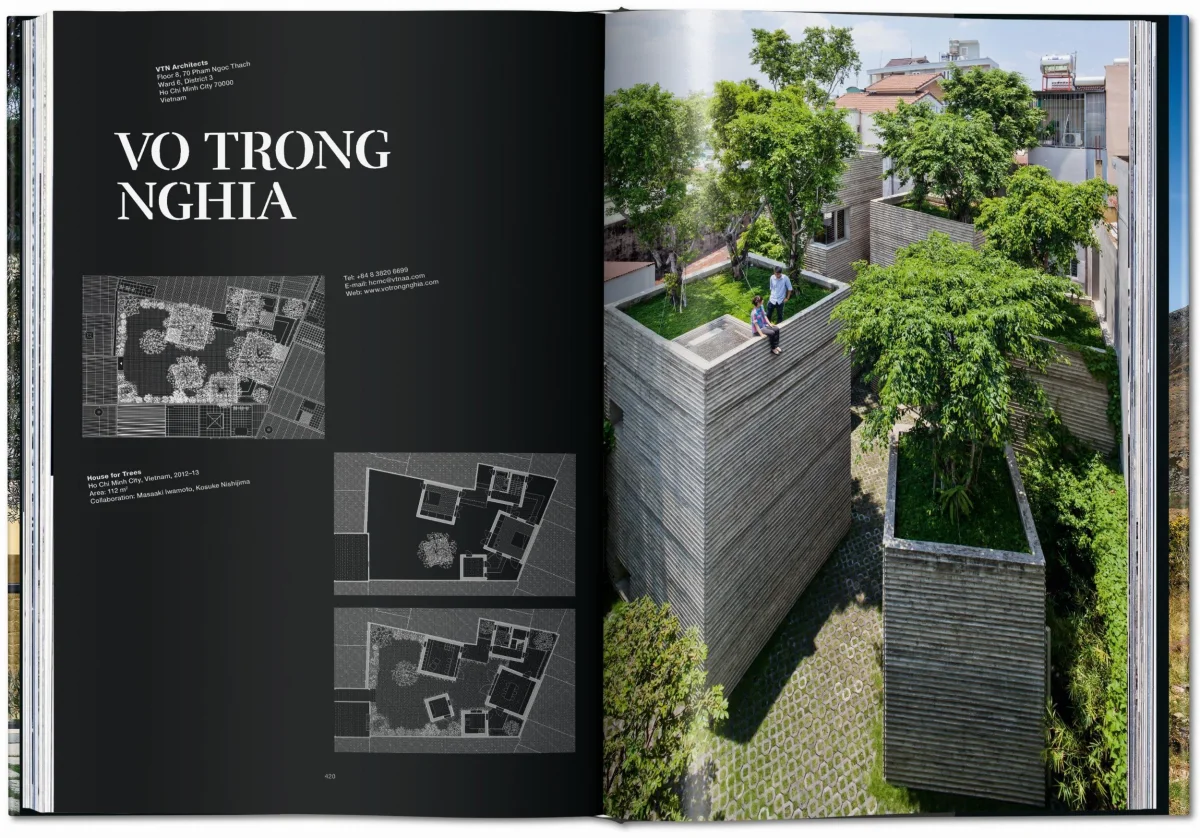1 / 7
XL
I libri XL hanno un'altezza minima di 34 cm, ad eccezione dei titoli in formato orizzontale.
Homes For Our Time. Contemporary Houses around the World
80Edizione: Multilingue (Francese, Inglese, Tedesco)Disponibilità: DisponibileScopri le case moderne più belle del mondo. Questa accurata raccolta globale presenta talenti come Shigeru Ban, MVRDV e Marcio Kogan, oltre a giovani emergenti come Xu Fu-Min, Vo Trong Nghia, Desai Chia e Shunri Nishizawa. L’opera è catalogata per architetti ed è ricca di fotografie e progetti accurati. Il risultato è un’ampia rassegna di case in stile contemporaneo.
Copertina rigida, 9.7 x 14.6 in., 8.12 lb, 456 pagine
“Un’avvincente rassegna su scala globale del meglio dell’abitare contemporaneo.”
XL
I libri XL hanno un'altezza minima di 34 cm, ad eccezione dei titoli in formato orizzontale.

Homes for Our Time. Contemporary Houses around the World
80There’s No Place Like Home
Step into the world’s most beautiful private abodes
Across small cottages and lavish villas, beach houses and forest refuges, discover the world’s finest crop of new homes. This cutting-edge global digest features such talents as Shigeru Ban, MVRDV, and Marcio Kogan alongside up-and-coming names like Aires Mateus, Xu Fu-Min, Vo Trong Nghia, Desai Chia, and Shunri Nishizawa.
Here, there are homes in Australia and New Zealand, from China and Vietnam, in the United States and Mexico, and on to less expected places like Ecuador and Costa Rica. The result is a sweeping survey of the contemporary house and a revelation that homes across the globe may have more in common than expected.
Among guava trees and abandoned forts in Western India is a sanctuary designed for and by Kamal Malik of Malik Architecture. The House of Three Streams is a sprawling spectacle with high ceilings, verandas, and pavilions, perched atop a ridge overlooking two ravines. A medley of steel, glass, wood, and stone, the house weaves along the contour of the landscape, almost as an extension of the forest.
Encina House by Aranguren & Gallegos, an elegant, sloping structure reminiscent of a gazebo, similarly inhabits its surrounding vista. Ensconced in a pine forest north of Madrid, the lower level is embedded in rock and connected to the upper by a natural stone wall.
Shinichi Ogawa’s Seaside House is an immaculate two-story minimalist marvel in Kanagawa that overlooks the Pacific. Its living area spills onto a cantilevered terrace and infinity pool, almost dissolving into the ocean as one seamless entity.
In Vietnam, Shunri Nishizawa’s House in Chau Doc exudes tropical sophistication with exposed timber beams, woven bamboo, plants, concrete panels, and inner balconies and terraces. Its corrugated iron panels act as moveable walls and shutters, ushering in views of surrounding rice fields.
These homes—along with more than 50 others—are each remarkably distinct in design. They all, however, toe the line between inside and outside, each one symbiotic with its surroundings.
Here, there are homes in Australia and New Zealand, from China and Vietnam, in the United States and Mexico, and on to less expected places like Ecuador and Costa Rica. The result is a sweeping survey of the contemporary house and a revelation that homes across the globe may have more in common than expected.
Among guava trees and abandoned forts in Western India is a sanctuary designed for and by Kamal Malik of Malik Architecture. The House of Three Streams is a sprawling spectacle with high ceilings, verandas, and pavilions, perched atop a ridge overlooking two ravines. A medley of steel, glass, wood, and stone, the house weaves along the contour of the landscape, almost as an extension of the forest.
Encina House by Aranguren & Gallegos, an elegant, sloping structure reminiscent of a gazebo, similarly inhabits its surrounding vista. Ensconced in a pine forest north of Madrid, the lower level is embedded in rock and connected to the upper by a natural stone wall.
Shinichi Ogawa’s Seaside House is an immaculate two-story minimalist marvel in Kanagawa that overlooks the Pacific. Its living area spills onto a cantilevered terrace and infinity pool, almost dissolving into the ocean as one seamless entity.
In Vietnam, Shunri Nishizawa’s House in Chau Doc exudes tropical sophistication with exposed timber beams, woven bamboo, plants, concrete panels, and inner balconies and terraces. Its corrugated iron panels act as moveable walls and shutters, ushering in views of surrounding rice fields.
These homes—along with more than 50 others—are each remarkably distinct in design. They all, however, toe the line between inside and outside, each one symbiotic with its surroundings.
L'autore
Philip Jodidio ha studiato Storia dell’arte ed Economia ad Harvard e per più di vent’anni è stato curatore della rivista d’arte francese Connaissance des Arts. Tra i suoi libri si annoverano la serie Homes for Our Time di TASCHEN e monografie su vari architetti di spicco tra cui Norman Foster, Tadao Ando, Renzo Piano, Jean Nouvel e Zaha Hadid.
Homes For Our Time. Contemporary Houses around the World
Copertina rigida, 24.6 x 37.2 cm, 3.68 kg, 456 pagineISBN 978-3-8365-7117-3
Edizione: Multilingue (Francese, Inglese, Tedesco)Scarica qui le immagini del prodotto
4.9
Regalo perfecto
2 febbraio 2022
Este libro fue el regalo perfecto para un amante del paisajismo y arquitectura. A día de hoy me sigue recordando como disfruta ojeando y cogiendo ideas de este libro.Defina el espacio
17 dicembre 2021
Este libro recoge una cuidada selección de la arquitectura a la que deberíamos dirigirnos. Casas que redefinen el espacio en relación con lo humano.Sorprendente
6 novembre 2021
Ottima selezione, davvero molto curata e ispirata.Un merveilleux livre
3 novembre 2021
Passionnant! Un livre objet aussi intéressant que beau à regarder. Indispensable dans la bibliothèque.How will we live together?
3 novembre 2021
Here is the answer!Très beau livre
2 novembre 2021
Magnifique livre pour mettre dans une bibliothèque ou sur une table basse : une grande qualité d'impression, de belles photos inspirantes et des détails sur chaque projet.
